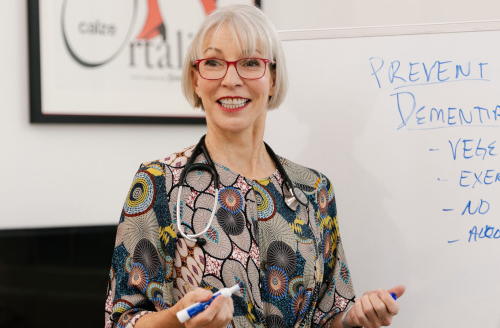Recently, I came across this story from a family that inspired more thoughts about swallowing:
An elderly woman suddenly started holding her breath. She gagged whenever she tried to eat, and she started spitting up saliva. Her daughter, a nurse, thought, “Oh my God, this is it.” The daughter rushed her mother to the emergency room. The doctors at the ER confirmed the daughter’s fears: Her mother’s dementia had progressed, they said. Her mother was losing the ability to swallow, a development that often marks the beginning of the end.
The daughter asked the physicians to do what’s called a “swallow evaluation,” in which a doctor would thread an “endoscope” down the patient’s throat to see what was going on. The ER docs refused to do this, and suggested that the daughter arrange for it through primary care.
The next day, her mother started holding her breath again and was really beginning to suffer, so the daughter took her back to the ER. At first, the doctors didn’t want to admit her mother, but they finally relented. Again, the doctors insisted that the daughter needed to accept that the dementia had progressed, that this “was it” and so on.
The daughter responded that she was willing to make the hard decisions when the time came. But she wanted to be sure that she’d exhausted all possibilities first. She pushed for the endoscopic examination of her mother’s throat. Finally, the doctors relented.
When they did the evaluation, they found that the patient’s throat had narrowed in two places. They stretched out those “rings” and the patient is back home and doing fine.
Like the swallow story I described in my previous post, I think that this story illustrates one of the central challenges of caring for elders with dementia:
How do you find the treatments and evaluations that will improve quality of life, while at the same time avoiding treatments and evaluations that can be done, but are unlikely to improve quality of life?
In my practice doing house calls for patients with dementia, I have often seen cases in which elder may have dementia, but still has a pretty good quality of life. Then that elder gets pneumonia from aspirating food, that is, from getting bits of food lodged in their airways. Let’s say this happens twice in four months. Too often, patients will be referred to hospice in a case like this. But I have found that it’s often enough to decrease sedating medications and to prescribe a full course of antibiotics.
That’s the balance we must try to maintain in caring for elders with dementia: Do enough; but not too much.
Less sedation and antibiotics may be the solution in the case that I just described. But let’s say the patient eventually progresses to a point where they really cannot swallow. In that case, I generally would not recommend a feeding tube. It might prolong life, but what sort of life?
Often, even at the end of life, there are all sorts of things that we still can do. The tricky question is: Should we? The answers are different for each family and for each case, but I think it’s always good to ask these questions: “Does the patient have a good quality of life? Will the exam or the treatment we’re considering add to that patient’s quality of life? If the treatment or the exam will not add to quality of life, then why are we considering it?
These are tough questions to ask and to answer. But I believe they are necessary questions.
Elizabeth Landsverk, MD – Specialist in dementia

Elizabeth (Dr Liz) has over twenty years of experience in providing medical care to the elders. She is board-certified in Internal Medicine, Geriatric Medicine and Palliative Care Medicine. Dr Landsverk founded ElderConsult Geriatric Medicine, a house calls practice, to address the challenging medical and behavioral issues often facing older patients and their families.

